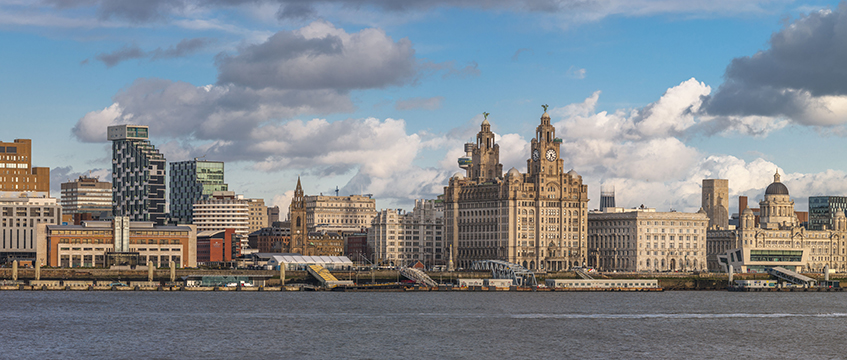Will a Liverpool city centre resi bubble lead to trouble?
Liverpool is ranked by LSH as the UK’s third most potent PRS market and, not surprisingly, there is plenty of PRS development on the way. But it comes at a time where there are more than 11,000 units in the development pipeline and more than 2,500 either for sale or under construction, according to sales and letting agency City Residential.
Of course, residential development is much needed, but some are concerned there may be a supply bubble forming in the city centre, particularly for properties bought by investors to rent out – buy-to-let rather than purpose-built rental property.
The legal and political turmoil surrounding a £200m development – which includes 790 apartments – planned for Liverpool’s Chinatown hasn’t helped.
Liverpool is ranked by LSH as the UK’s third most potent PRS market and, not surprisingly, there is plenty of PRS development on the way. But it comes at a time where there are more than 11,000 units in the development pipeline and more than 2,500 either for sale or under construction, according to sales and letting agency City Residential.
Of course, residential development is much needed, but some are concerned there may be a supply bubble forming in the city centre, particularly for properties bought by investors to rent out – buy-to-let rather than purpose-built rental property.
The legal and political turmoil surrounding a £200m development – which includes 790 apartments – planned for Liverpool’s Chinatown hasn’t helped.
The mixed-use scheme, which includes 120,000 sq ft of offices and a hotel, is proposed by Chinatown Development Company for a site next to the Anglican cathedral. A number of residential units have already been presold to UK and overseas investors.
However, a series of delays meant the council (which has interests in the site) stepped in and further court action is expected next month.
It may be one particular case, but some observers say it is a wake-up call to look at what is being built and where.
Ian Sherry is director at Glenbrook, the developer that teamed up with Moorfield to develop The Keel PRS scheme two years ago and is now seeking planning consent for a 275-unit second phase.
What’s going on in Liverpool
2,525 units for sale or currently under construction
1,166 units for sale in stalled schemes
11,313 units for sale in the pipeline
12,558 existing city core housing units
4,084 existing city core owner occupied units
7,107 existing city core tenanted units
He says one must first draw a distinction between long-term PRS and “fractured ownership” (sometimes called fractional sales) developments. Then one must begin to think about where the second category – fractured ownership – is going.
“There are only two proper PRS schemes in Liverpool: ours at the Keel and the Cargo Building [local developer Promenade Estates’ Baltic Village scheme, sold to Hermes Investment Managers and Vista Fund for around £50m]. And there are three more on the way.
“The majority of the rest… are sold directly to overseas investors on guaranteed rentals, so they are not PRS, they are build-to-sell-to-overseas-investors,” he says.
Selling to overseas buyers is understandable when you look at the numbers.
“They are getting far higher deposits of 20-40%, compared to 10% domestically,” Sherry explains.
“Off-plan sales with a rental guarantee also come with bigger prices: £240 per sq ft is the average sale price on standing stock, but it is £259 per sq ft for rent-guaranteed space. The big worry is the rental guarantees – what happens if they can’t be sustained?”
It isn’t a problem if the market can sustain rents equal to or above those of the guarantees. But this is where there is concern: supply is increasing and the UK economy is confronting multiple instabilities, from the increasingly likely rise in interest rates, rising inflation due to Brexit and labour supply issues.
So is Liverpool in a dangerous bubble? Sherry isn’t so keen on the word, but recognises the diagnosis.
“There will be winners and losers,” he says. “We are confident that when that happens there will be a flight to quality PRS and tenants will start to understand the difference. Today the overwhelming factor in tenants’ choice is still the location.”
He adds that good management will also help residential schemes attract and retain tenants and that it is better to look at the longer-term picture than at short-term gains.
[caption id="attachment_857191" align="aligncenter" width="570"] Glenbrook and Moorfield’s Keel scheme[/caption]
Sherry is not a lone voice. When Alan Bevan, director at City Residential, is asked if the market is sustainable or looking like a bubble he doesn’t give a yes or no but instead offers a warning.
“My big concern is that a lot of product is modelled on fractional sales to overseas investors on guaranteed yields,” he says.
“I am worried about the future of this model and the rental project that gets delivered because it will never be as well-built or managed as PRS. A lot is being delivered to suit investors, not tenants, and that is a big concern.”
Bevan says that while the best city blocks can secure rents equivalent to £18-£19 per sq ft, the market norm is closer to £14-£15 per sq ft and anything above £16 per sq ft needs to be of high quality and well managed.
He says the vast majority of the guaranteed rental schemes are pitched at £18-£19 and maintaining rentals when guaranteed yield periods end could be a problem as “every individual landlord is free to do what they want with the rent, so you could get a vicious circle of rental drops, leading to service-level drops.”
He also believes there will be a flight to quality with good, well-managed buildings maintaining rentals. And that is what Liverpool needs: proper, institutionally backed single-ownership PRS with a 30-40-year ownership plan.
He says the city could also do with some buildings aimed at owner-occupiers: today just 4% of the city centre market is for them.
That, of course, is coming: a modest but growing pipeline is on the way (see below).
Robert Hogarth, director of residential investment and development at JLL, says: “From an institutional investor perspective, Liverpool’s fundamentals stack up well as a potential destination for build-to-rent.
“The city centre has a well-developed leisure offer, and the demographics are complementary for PRS – approximately 80% of the population is below 35 years old and mean household income is above average for UK core cities.”
All true. Let’s hope that Liverpool’s residential supply pipeline proves to be just what the market needs.
Liverpool PRS schemes on the way
[caption id="attachment_877828" align="aligncenter" width="847"] Peel and Ragenda’s Plaza 1821 scheme[/caption]
There are plenty of purpose-built PRS in the pipeline. The schemes most often mentioned include a joint venture between Patten Properties and Panacea Property Development, which has planning permission for 383 apartments in a 16-storey development at the Strand, on the Liverpool waterfront.
Anwyl is behind plans for a 366-home development on the corner of Pall Mall and Prussia Street, while Peel and Ragenda are behind £21m plans for Plaza 1821 at Liverpool Waters, where there will be 105 apartments in a 16-storey block.
Moda Living, backed by Apache, is behind £82m plans for a 34-storey tower at Princes Dock, and Carpenter Investments is behind 97 apartments at Vine Street. Your Housing is working on the £48m Hive scheme, also at Princess Dock, providing 279 units.
Click here for more information on Liverpool.
David Thame











